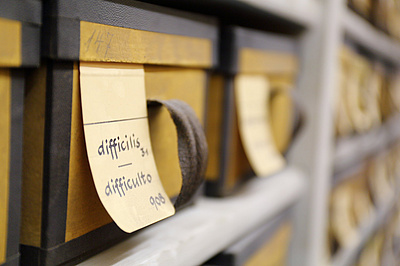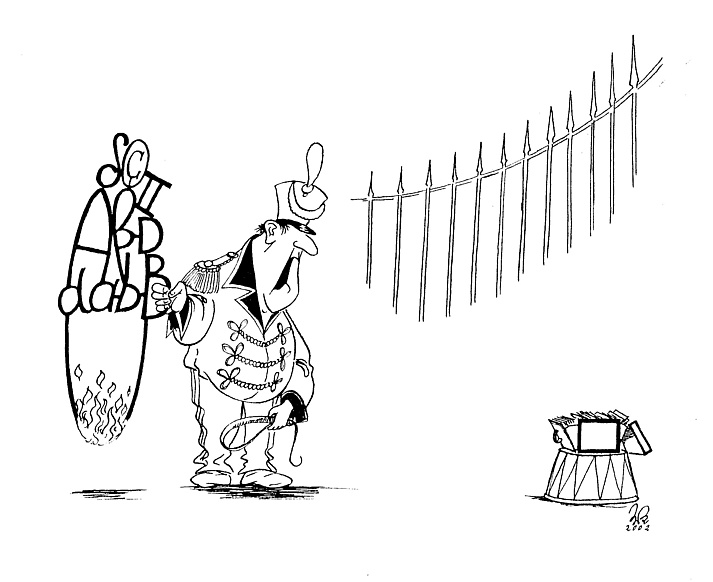Compiling an article

The contributor is allocated a particular word and given the box(es) of slips containing the passages in which the word appears (cf. Thesaurus Material). With the help of modern editions, commentaries, and other literature, he or she checks all the examples of the word in relation to the manuscript tradition and the constitution of the text, and also to spelling, prosody, and grammatical form, with special attention to the meaning and usage of the word in each occurrence.
This interpretation of the material leads to the development of suitable categories for presenting the word and the formation of groups of related occurrences; these, arranged in the appropriate order, illustrate the history of this word.
The article, printed after revision by an editor and checking by the General Editor and external specialists, offers the user the sum of all the observations that have been made, mainly via attestations arranged according to meaning and usage; because the relevant context usually appears in the quotations, the results presented in the article can generally be verified straight away.
‘The TLL ... emerges as above all a human creation: a product of great learning and industry; in perpetual evolution, holding up a mirror to trends in scholarship at large; and potentially fallible, as is the lot of all human endeavors.’
Coleman (2007)
The Specimen article shows the enormous wealth of information a Thesaurus article offers. An extensive introduction can be found under Article structure.
Roberta Stewart (Professor of Classical Studies, Dartmouth College, USA) uses the lemma recalcitro to explain in detail how a dictionary article is written (external link).

